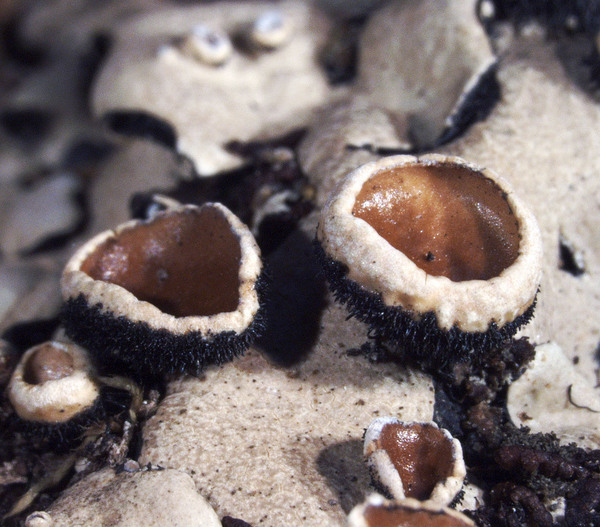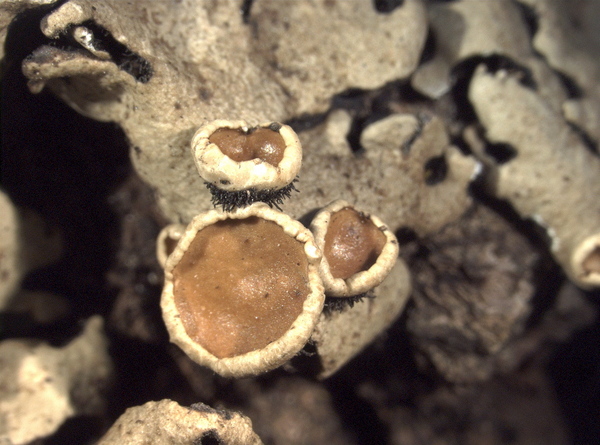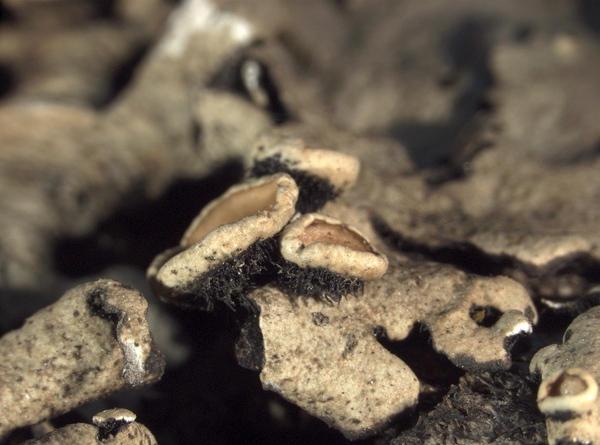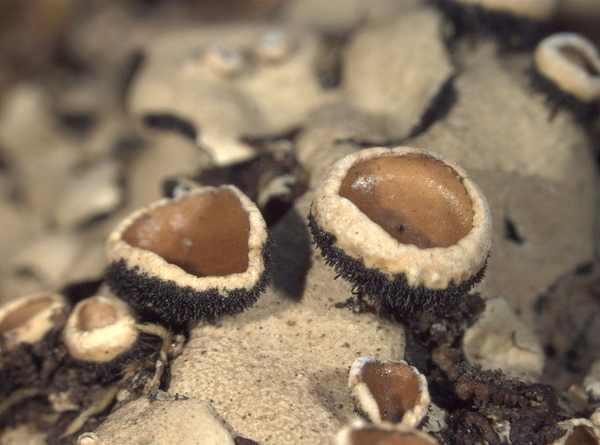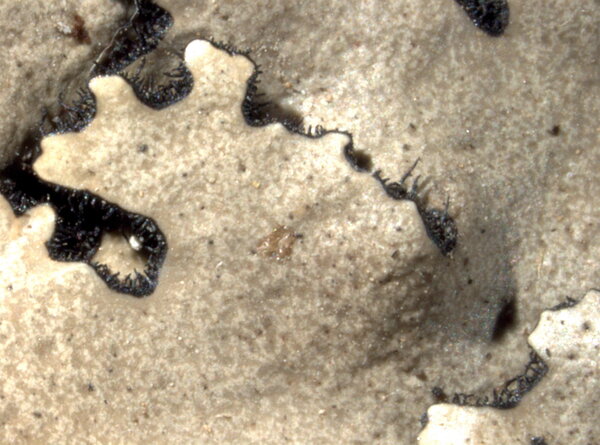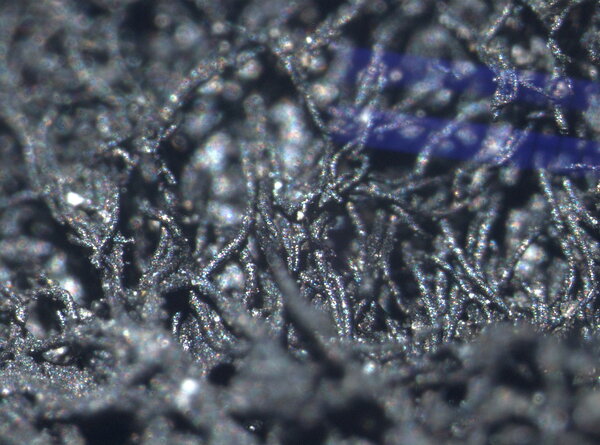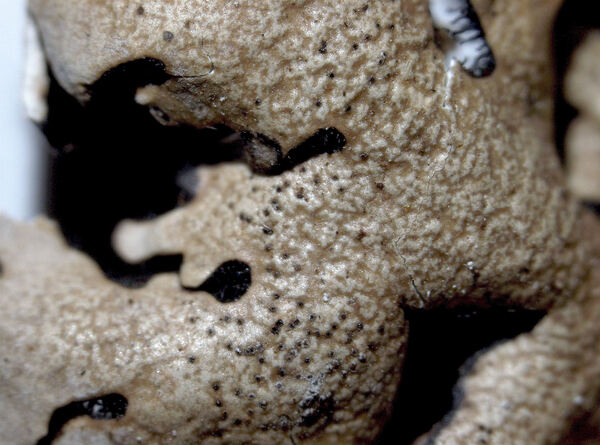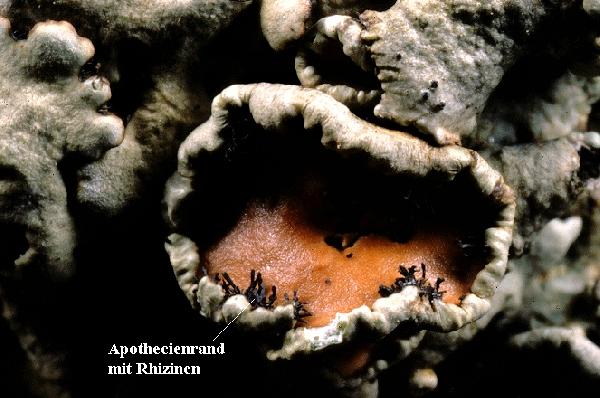Parmelina carporrhizans (Taylor) Poelt & Vězda
Bestimmungsschl. europ. Flechten: 183, 1977. Basionym: Parmelia carporrhizans Taylor - London J. Bot., 6: 163, 1847.
Synonyms: Parmelia quercina var. carporrhizans (Taylor) V. Wirth; Parmelia tiliacea subsp. carporrhizans (Taylor) Nyl.; Parmelia tiliacea var. carporrhizans (Taylor) Flagey
Description: Thallus foliose, heteromerous, tightly to loosely adnate, forming 3-10(-15) cm wide rosettes. Lobes 2-4-(-8) mm wide, dichotomously or irregularly branched, mostly long and deeply incised, contiguous, usually not becoming rapidly imbricate, the tips rounded, distinctly crenate, slightly down-turned, rarely pruinose, with black, 0.08-0.2 mm long marginal cilia (difficult to distinguish from young rhizines) wich are most frequent along the characteristically rounded axils. Upper surface pale mineral grey to blue-grey, smooth, often somehow shiny, with punctiform to effigurate, whitish maculae (at 25-50 x magnification); lower surface black, shiny, brownish at lobe tips, with long (0.8-1.4 mm), rather thin, dense, simple, black, shiny rhizines that often develop horizontally and resemble cilia. Upper cortex of tightly packed, anticlinally oriented hyphae, with a pored epicortex, the cell walls with isolichenan; medulla white; algal layer continuous; lower cortex paraplectenchymatous, with rounded and thick-walled cells. Apothecia common, lecanorine 3-5(-12 mm) across, with a red-brown disc and a thick thalline margin; lower side of margin smooth, often with few to numerous rhizines. Epithecium brownish; hymenium and hypothecium colourless. Asci 8-spored, clavate, the K/I+ blue tholus penetrated by a faintly amyloid apical cushion with parallel or diverging flanks, the wall K/I-, surrounded by a K/I+ blue outer layer, Lecanora-type. Ascospores 1-celled, hyaline, oval to short-ellipsoid, 8-11 x 5-7 μm. Pycnidia numerous, appearing as black dots. Conidia bacilliform, straight, (7-)8-9(-10) x 0.5-1 μm. Spot tests: upper cortex K+ yellow, C-, KC-, P- or P+ faintly yellow; medulla K-, C+ red, KC+ red, P-, UV-. Chemistry: upper cortex with atranorin, medulla with lecanoric acid (major) and gyrophoric acid (minor).
Growth form: Foliose, broad lobed
Substrata: bark
Photobiont: green algae other than Trentepohlia
Reproductive strategy: mainly sexual
Commonnes-rarity: (info)
Alpine belt: absent
Subalpine belt: absent
Montane belt: rare
Dry submediterranean belt: rather rare
Humid submediterranean belt: rather common
Padanian area: extremely rare
pH of the substrata:
1 2 3 4 5
Solar irradiation:
1 2 3 4 5
Aridity:
1 2 3 4 5
Eutrophication:
1 2 3 4 5
Poleotolerance:
0 1 2 3
Altitudinal distribution:
1 2 3 4 5 6
Rarity
absent
extremely rare
very rare
rare
rather rare
rather common
common
very common
extremely common
Loading data...
Occurrence data
Predictive map
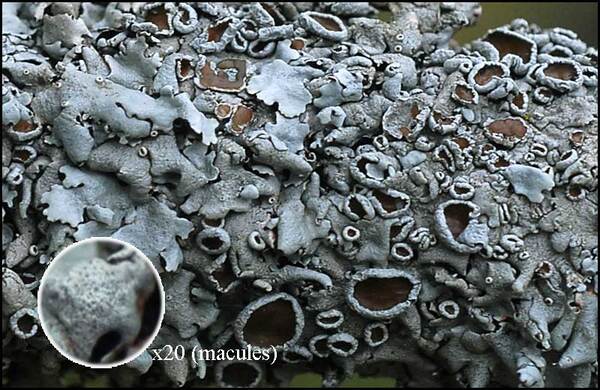
Courtesy Danièle et Olivier Gonnet - Source: https://www.afl-lichenologie.fr/Photos_AFL/Photos_AFL_P/Parmelina_carporrhizans.htm
France, sur branchette de frêne - 2009 - Vaucluse
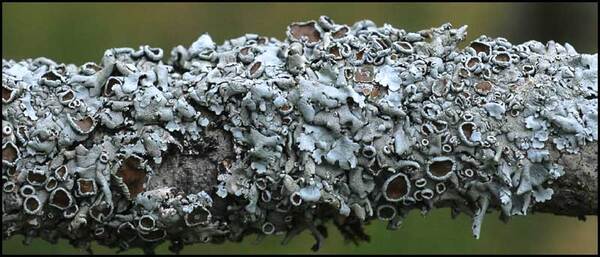
Courtesy Danièle et Olivier Gonnet - Source: https://www.afl-lichenologie.fr/Photos_AFL/Photos_AFL_P/Parmelina_carporrhizans.htm
France, sur branchette de frêne - 2009 - Vaucluse
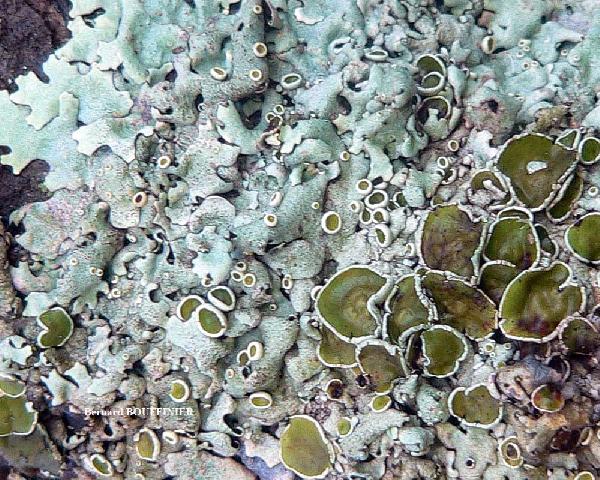
Bernard Bouffinier - Source: http://www.lichensmaritimes.org/index.php?task=fiche&lichen=535&lang=en
France, Crozon
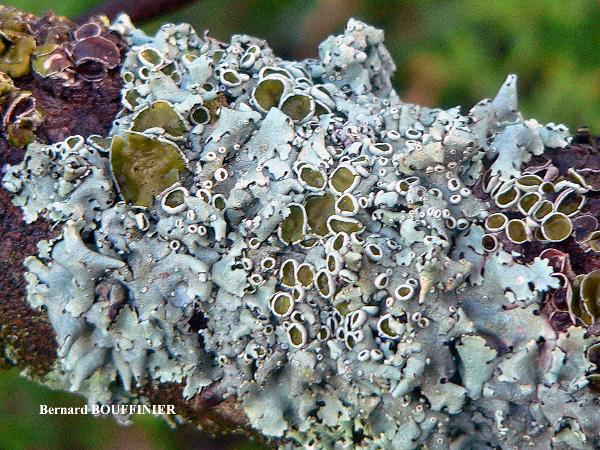
Bernard Bouffinier - Source: http://www.lichensmaritimes.org/index.php?task=fiche&lichen=535&lang=en
France, Manosque
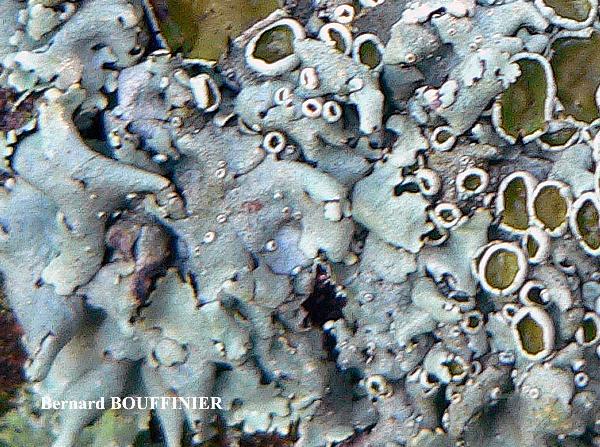
Bernard Bouffinier - Source: http://www.lichensmaritimes.org/index.php?task=fiche&lichen=535&lang=en
France, Manosque
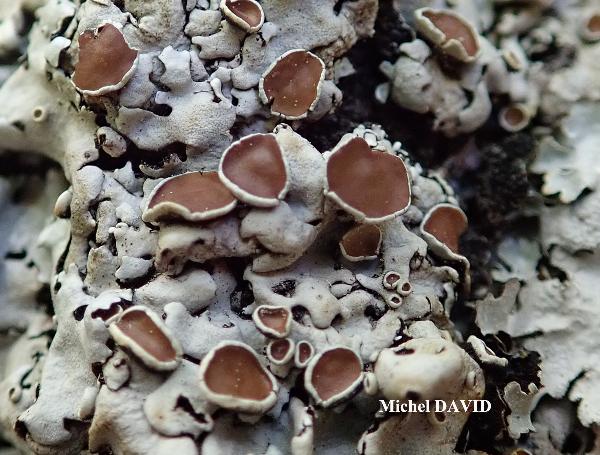
Michel David - Source: http://www.lichensmaritimes.org/index.php?task=fiche&lichen=535&lang=en
France, Corse, Col de Bavella
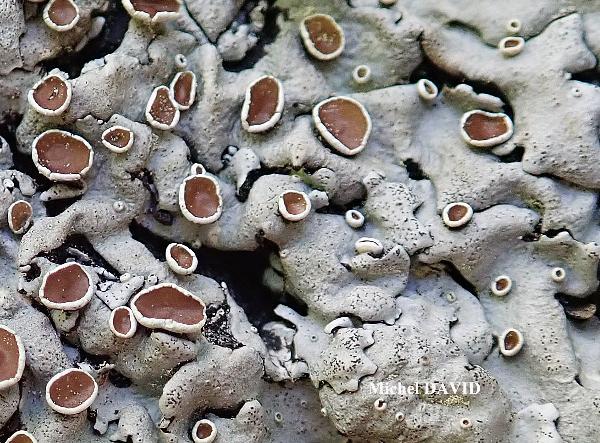
Michel David - Source: http://www.lichensmaritimes.org/index.php?task=fiche&lichen=535&lang=en
France, Corse, Col de Bavella
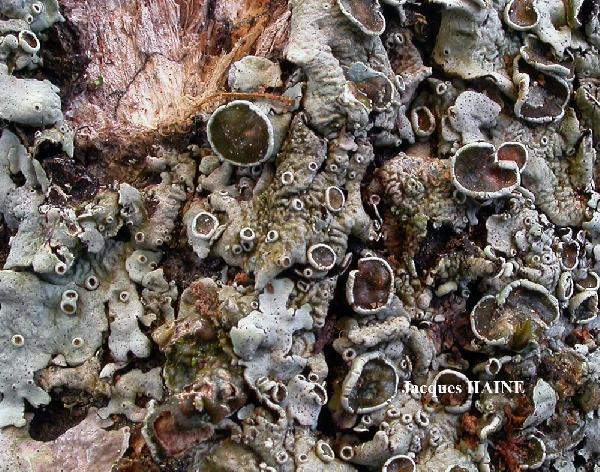
Jacques Haine - Source: http://www.lichensmaritimes.org/index.php?task=fiche&lichen=535&lang=en
France, Drôme Provençale
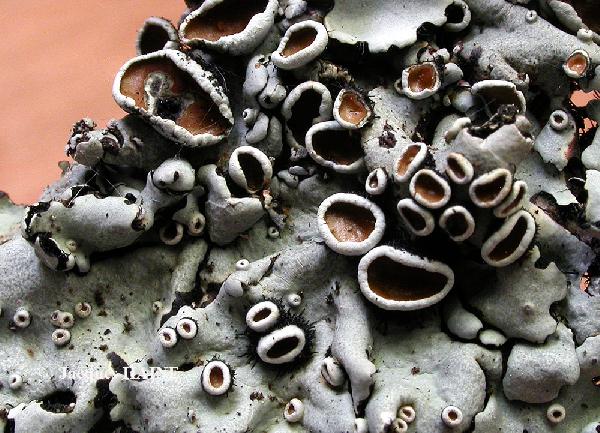
Jacques Haine - Source: http://www.lichensmaritimes.org/index.php?task=fiche&lichen=535&lang=en
France, Drôme Provençale
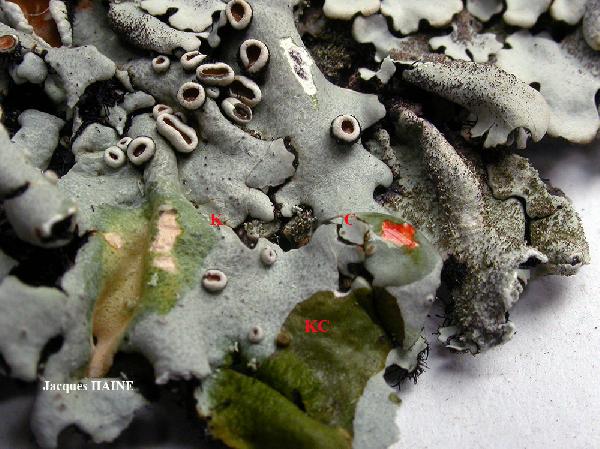
Jacques Haine - Source: http://www.lichensmaritimes.org/index.php?task=fiche&lichen=535&lang=en
France, Drôme Provençale
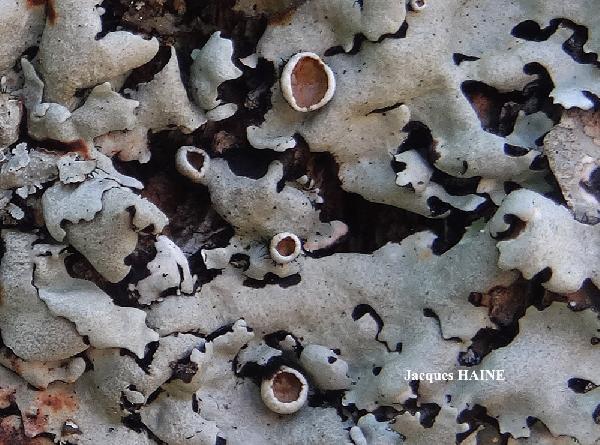
Jacques Haine - Source: http://www.lichensmaritimes.org/index.php?task=fiche&lichen=535&lang=en
France, Drôme Provençale
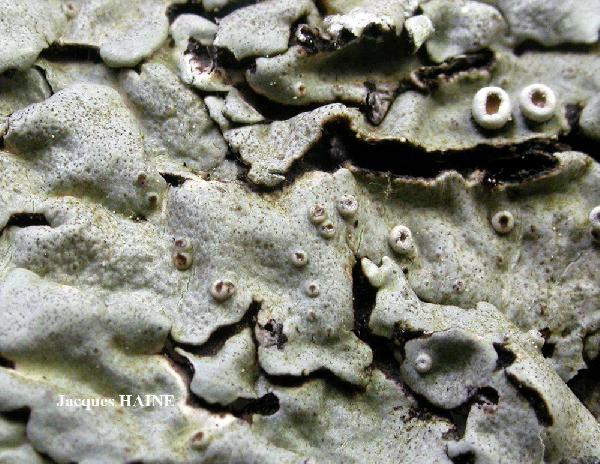
Jacques Haine - Source: http://www.lichensmaritimes.org/index.php?task=fiche&lichen=535&lang=en
France, Drôme Provençale

Jacques Haine - Source: http://www.lichensmaritimes.org/index.php?task=fiche&lichen=535&lang=en
France, Drôme Provençale
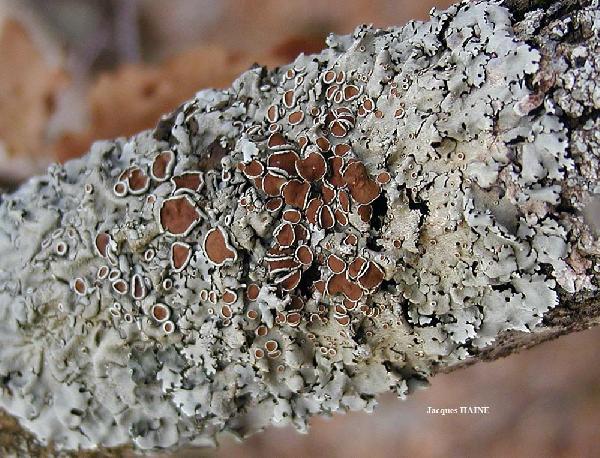
Jacques Haine - Source: http://www.lichensmaritimes.org/index.php?task=fiche&lichen=535&lang=en
France
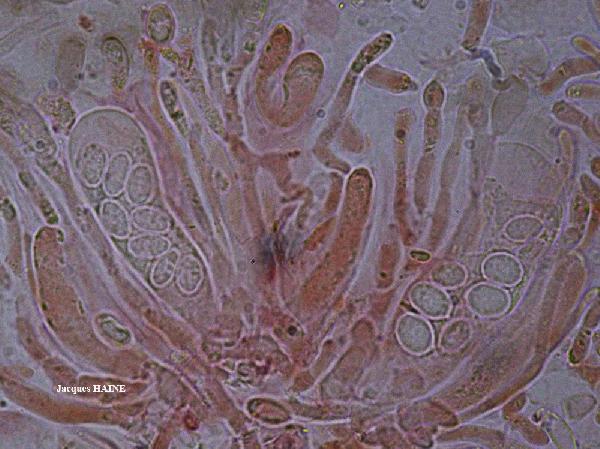
Jacques Haine - Source: http://www.lichensmaritimes.org/index.php?task=fiche&lichen=535&lang=en
France, Drôme Provençale
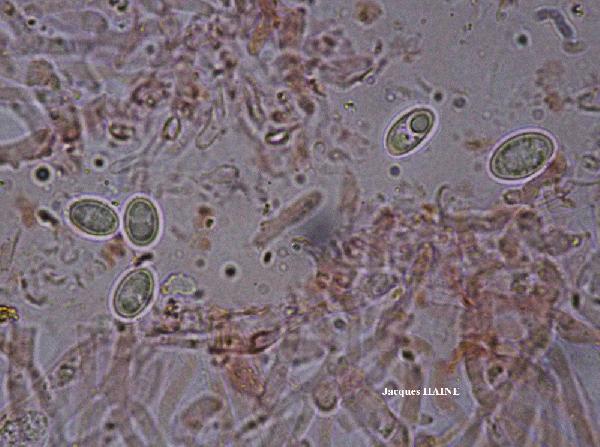
Jacques Haine - Source: http://www.lichensmaritimes.org/index.php?task=fiche&lichen=535&lang=en
France, Drôme Provençale
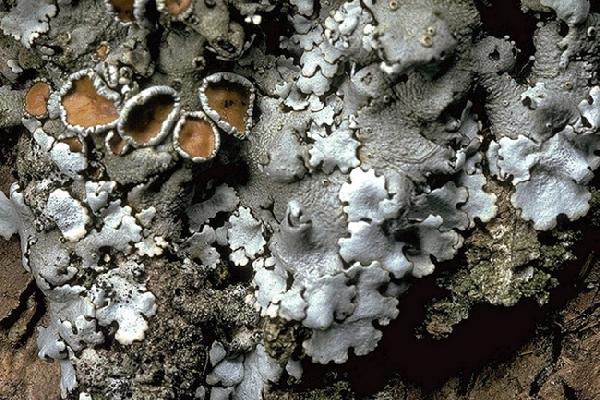
Ulrich Kirschbaum CC BY-SA 4.0 - Source: https://www.thm.de/lse/ulrich-kirschbaum/flechtenbilder
Austria: Alps.
Growth form: Foliose, broad lobed
Substrata: bark
Photobiont: green algae other than Trentepohlia
Reproductive strategy: mainly sexual
Commonnes-rarity: (info)
Alpine belt: absent
Subalpine belt: absent
Montane belt: rare
Dry submediterranean belt: rather rare
Humid submediterranean belt: rather common
Padanian area: extremely rare
pH of the substrata:
| 1 | 2 | 3 | 4 | 5 |
Solar irradiation:
| 1 | 2 | 3 | 4 | 5 |
Aridity:
| 1 | 2 | 3 | 4 | 5 |
Eutrophication:
| 1 | 2 | 3 | 4 | 5 |
Poleotolerance:
| 0 | 1 | 2 | 3 |
Altitudinal distribution:
| 1 | 2 | 3 | 4 | 5 | 6 |
Rarity
absent
extremely rare
very rare
rare
rather rare
rather common
common
very common
extremely common
Loading data...
Occurrence data
Predictive map

Courtesy Danièle et Olivier Gonnet - Source: https://www.afl-lichenologie.fr/Photos_AFL/Photos_AFL_P/Parmelina_carporrhizans.htm
France, sur branchette de frêne - 2009 - Vaucluse

Courtesy Danièle et Olivier Gonnet - Source: https://www.afl-lichenologie.fr/Photos_AFL/Photos_AFL_P/Parmelina_carporrhizans.htm
France, sur branchette de frêne - 2009 - Vaucluse

Bernard Bouffinier - Source: http://www.lichensmaritimes.org/index.php?task=fiche&lichen=535&lang=en
France, Crozon

Bernard Bouffinier - Source: http://www.lichensmaritimes.org/index.php?task=fiche&lichen=535&lang=en
France, Manosque

Bernard Bouffinier - Source: http://www.lichensmaritimes.org/index.php?task=fiche&lichen=535&lang=en
France, Manosque

Michel David - Source: http://www.lichensmaritimes.org/index.php?task=fiche&lichen=535&lang=en
France, Corse, Col de Bavella

Michel David - Source: http://www.lichensmaritimes.org/index.php?task=fiche&lichen=535&lang=en
France, Corse, Col de Bavella

Jacques Haine - Source: http://www.lichensmaritimes.org/index.php?task=fiche&lichen=535&lang=en
France, Drôme Provençale

Jacques Haine - Source: http://www.lichensmaritimes.org/index.php?task=fiche&lichen=535&lang=en
France, Drôme Provençale

Jacques Haine - Source: http://www.lichensmaritimes.org/index.php?task=fiche&lichen=535&lang=en
France, Drôme Provençale

Jacques Haine - Source: http://www.lichensmaritimes.org/index.php?task=fiche&lichen=535&lang=en
France, Drôme Provençale

Jacques Haine - Source: http://www.lichensmaritimes.org/index.php?task=fiche&lichen=535&lang=en
France, Drôme Provençale

Jacques Haine - Source: http://www.lichensmaritimes.org/index.php?task=fiche&lichen=535&lang=en
France, Drôme Provençale

Jacques Haine - Source: http://www.lichensmaritimes.org/index.php?task=fiche&lichen=535&lang=en
France

Jacques Haine - Source: http://www.lichensmaritimes.org/index.php?task=fiche&lichen=535&lang=en
France, Drôme Provençale

Jacques Haine - Source: http://www.lichensmaritimes.org/index.php?task=fiche&lichen=535&lang=en
France, Drôme Provençale



